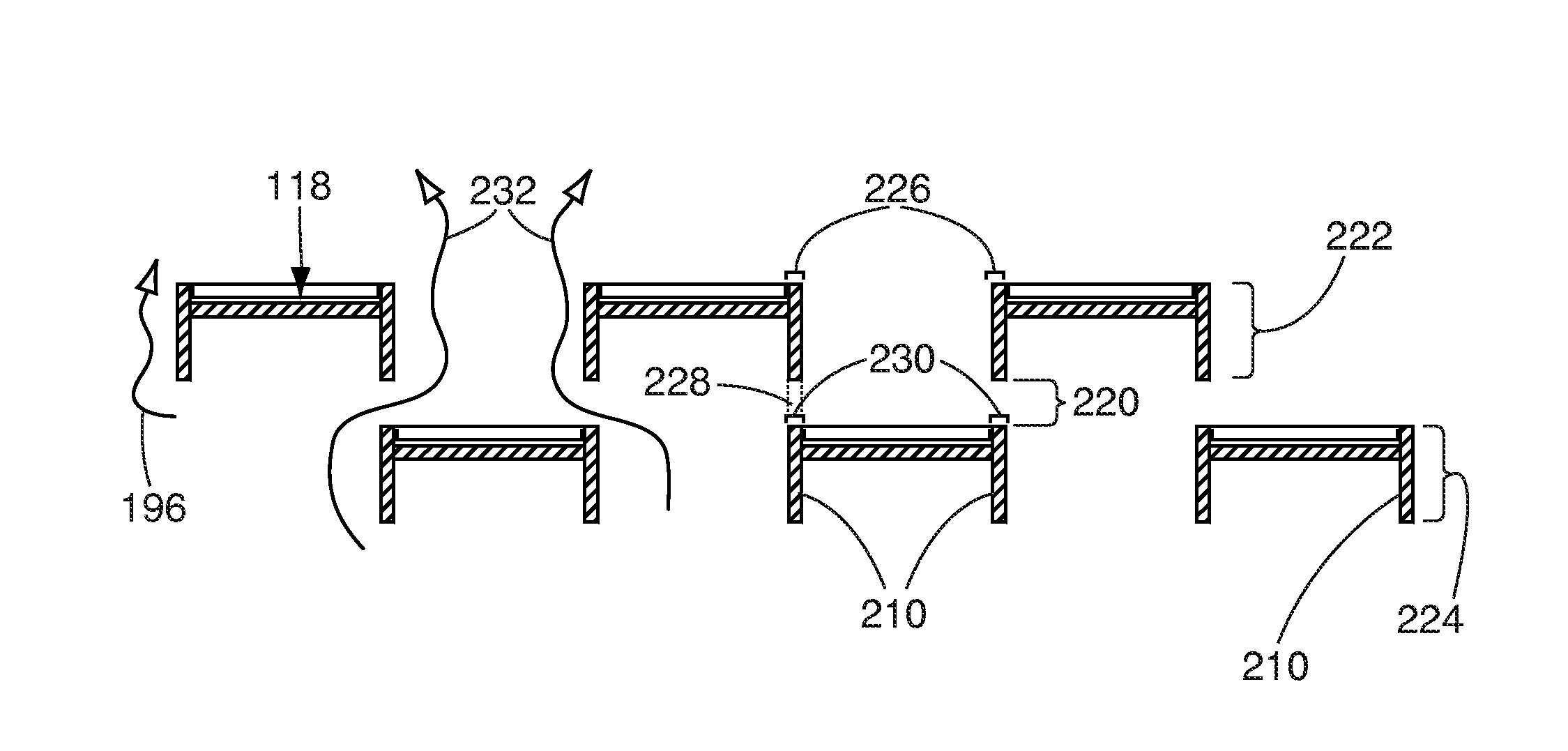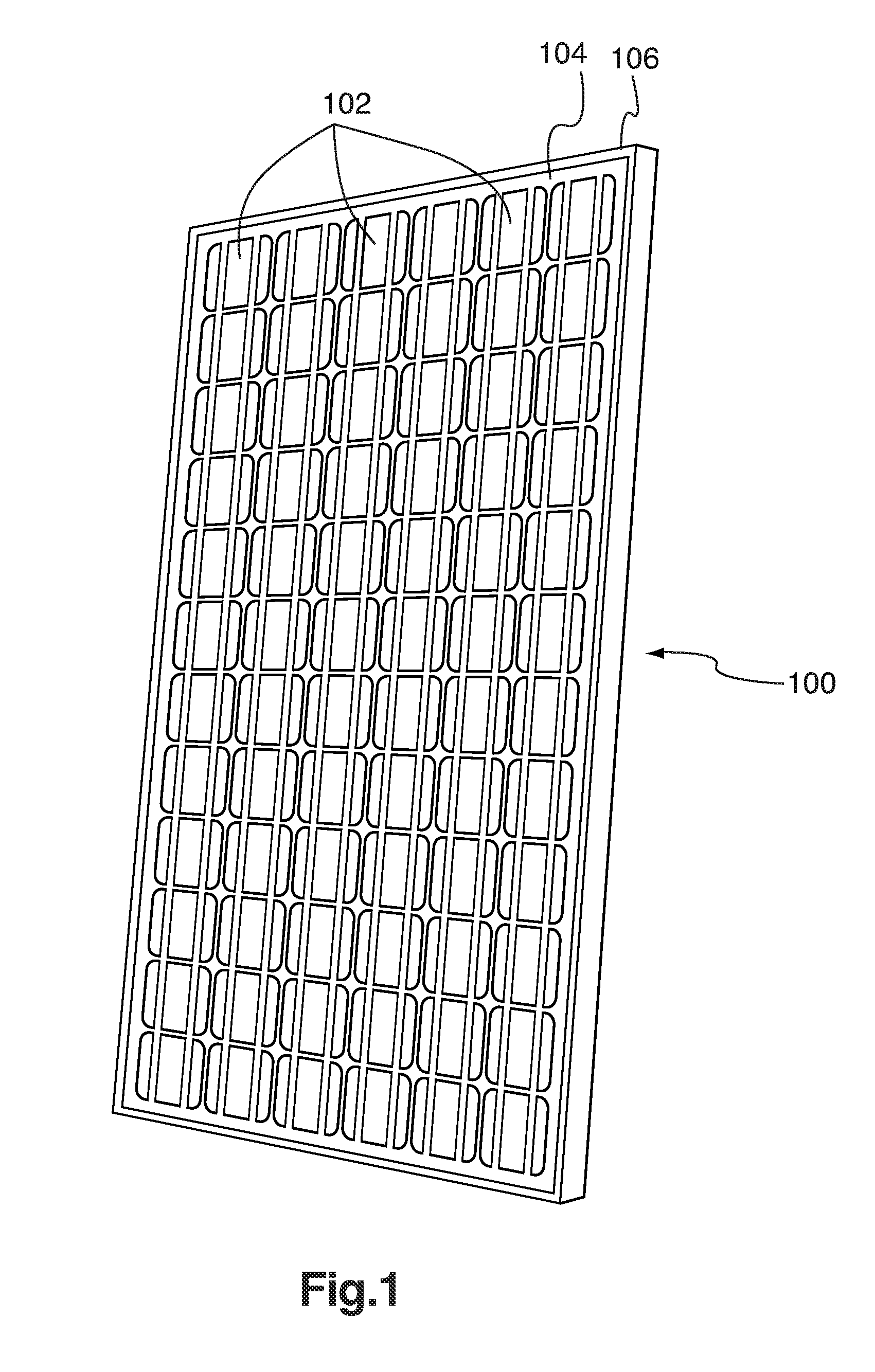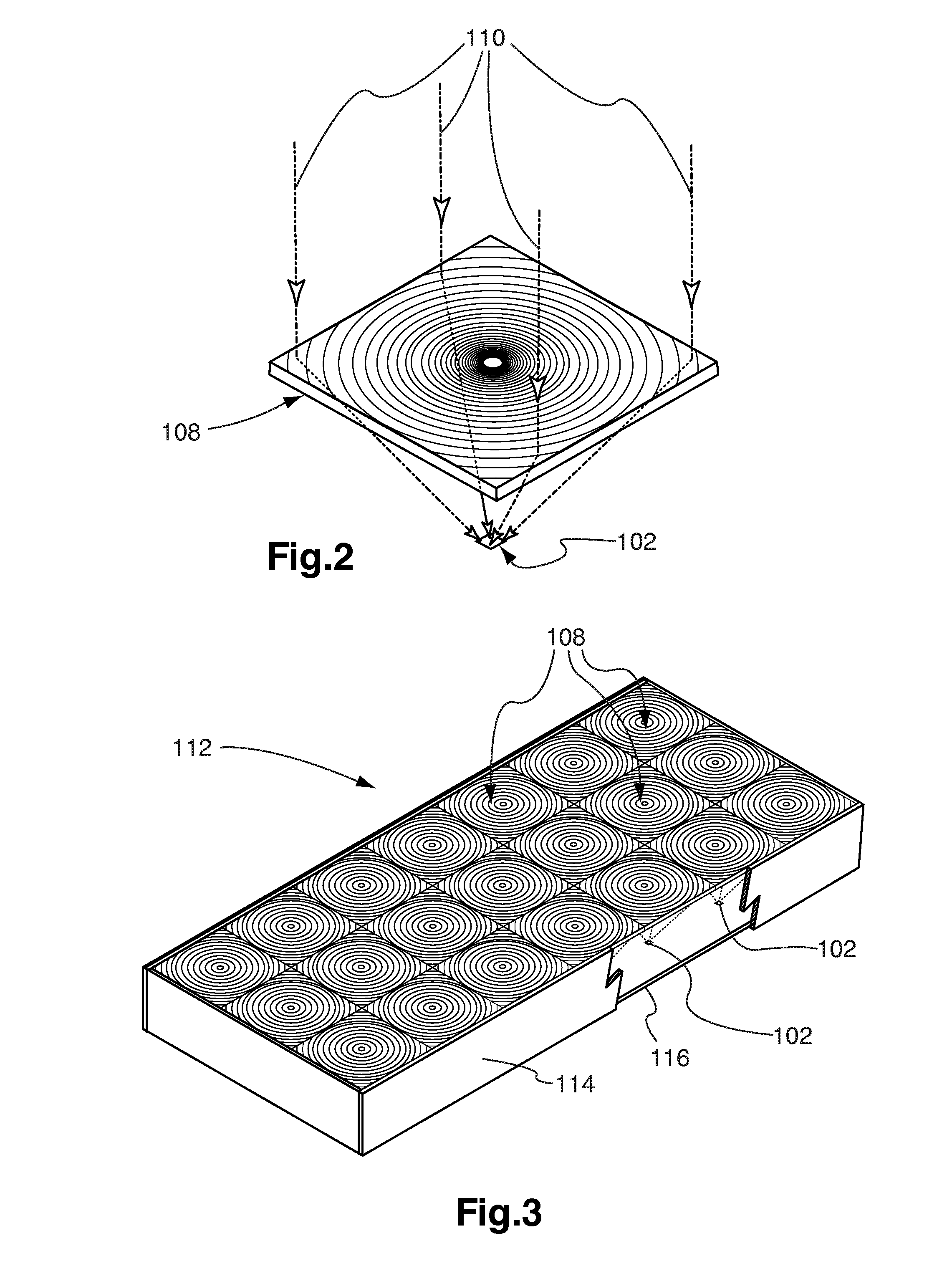Staggered light collectors for concentrator solar panels
- Summary
- Abstract
- Description
- Claims
- Application Information
AI Technical Summary
Benefits of technology
Problems solved by technology
Method used
Image
Examples
Embodiment Construction
[0053]The present invention is related to an arrangement of solar energy collector modules (SECMs). A first group of spaced-apart SECMs defines a first plane which is substantially parallel to a second plane defined by a second group of spaced-apart SECMs The first and second planes are separated by an air gap, and the first and second groups of SECMs are staggered with respect to each other. The staggering of the first and second groups of SECMs allows for light not harvested by the first group to be harvested by the second row and provides a low dead-space characteristic for the arrangement of solar energy collector modules. The air gap between the first and second planes allows for improved heat dissipation in the modules and prevents overheating of photovoltaic elements comprised in the SECMs. Further, the air gap and the spacing between SECMs of a same group allows for low resistance to wind. The arrangement of SECMs can be secured to a tracking system to allow optimum solar en...
PUM
 Login to View More
Login to View More Abstract
Description
Claims
Application Information
 Login to View More
Login to View More - R&D
- Intellectual Property
- Life Sciences
- Materials
- Tech Scout
- Unparalleled Data Quality
- Higher Quality Content
- 60% Fewer Hallucinations
Browse by: Latest US Patents, China's latest patents, Technical Efficacy Thesaurus, Application Domain, Technology Topic, Popular Technical Reports.
© 2025 PatSnap. All rights reserved.Legal|Privacy policy|Modern Slavery Act Transparency Statement|Sitemap|About US| Contact US: help@patsnap.com



